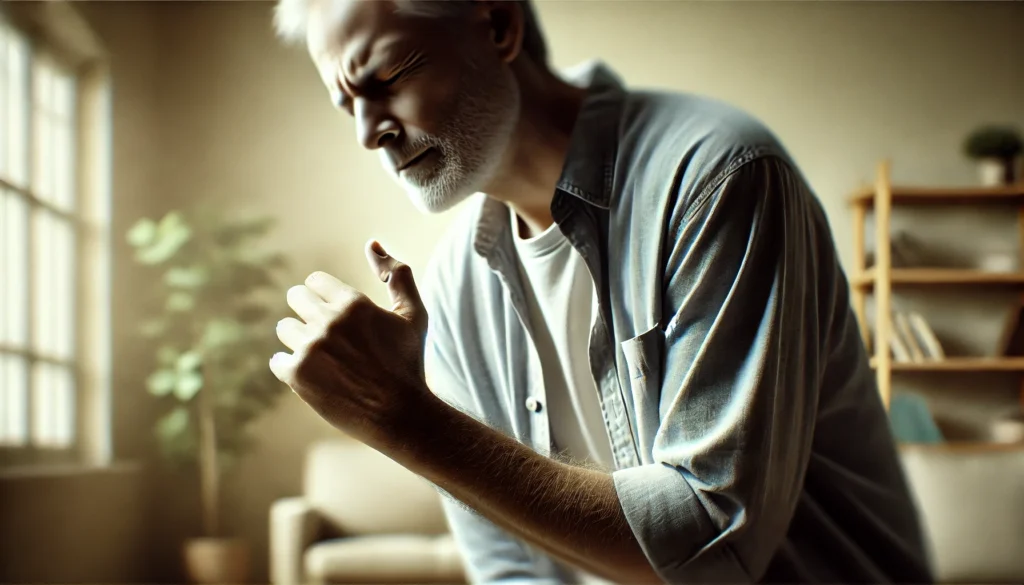Affecting millions, parkinson disease is a neurodegenerative disorder that causes progressive degeneration of motor and non-motor functions. The disease affects people over the age of 60, although some cases at early ages have also been observed. The most common symptoms of the problems are slowness of movement, rigidity, postural instability, and tremors. The motor symptoms of parkinson disease are beyond just congnition and fluctuating mood. It, rather affects the overall quality of life in a person. Yet, it is said that early diagnosis and understanding of the parkinson’s disease stages and the problems associated can help the person in getting the treatements on time. Taking necessary action plans is essential for controlling the parkinson disease and minimising its affects. Let’s find out more on the disesase.
What Is Parkinson Disease?
The main cause of the parkinson disease is loss of neurons that produce dopamine in the brain, specifically in substantia nigra, a part of the brain that controls your movements. Dopamine is a neurotransmitter which plays an essential role in handling coordination and regulating movement in a person. When the levels of dopamine decrease, the ability of the person’s brain to control movement gets affected severely, leading to the chronic symptoms of the disease in the body.
Having said that, nobody knowns the main cause of Parkinson disease but it is believed that combination of genetic and environmental factors triggers this problem. Some genetic mutations are said to be igniting the Parkinson disease in some people but it many not affect everyone with these mutations. Various environmental factors like pesticides, head trauma, or exposure to toxins are said to be increasing the risk.
The Motor and Non-Motor Symptoms of Parkinson Disease
Parkinson disease symptoms are segregated into motor and non-motor categories. Some of the most recognized motor symptoms, are:
- Tremors: Person experiences rhythmic shaking that normally begins from fingers or hands.
- Bradykinesia: In this movement is affected, making the person slow in handling everyday tasks.
- Rigidity: Person experiences stiffness of the muscles, which is highly painful and can restrict movement sometimes.
- Postural Instability: It makes difficult for a person to maintain balance which often lead to falls.
Non-motor symptoms of Parkinson disease, which can be overlooked in early diagnosis, are:
- Disturbances in Sleep: Restless sleep, difficulty falling asleep, or vivid dreams are common in this case.
- Cognitive decline: The person experiences slower thinking, difficulty in concentrating, or memory issues.
- Depression and Anxiety: Mood disorders are common among people suffering from Parkinson disease.
- Autonomic dysfunction: Another set of issues that affects are blood pressure, digestion problems, and bladder control.

What are key Parkinson’s Disease Stages?
Parkinson’s disease stages are defined as a roadmap to help people understand the effects of this condition and how it progresses with time. Here are five primary Parkinson’s Disease Stages, also known as the Hoehn and Yahr scale, ranging from mild to severe in terms of disability.
Stage 1: Mild Symptoms, Unilateral Involvement
In case of mild symptoms that is the first stage of Parkinson’s disease, one side of the body gets affected. At this stage, the person experiences rigidity, difficulity to move, and tremors of different kinds which might be noticeable but do not impact day to day activities. These symptoms are often mistaken for signs of aging in many cases as the individuals continue to function independently. The progression of Parkinson disease at this stage is slow, and most patients do no require medical attention.
Stage 2: Bilateral Symptoms, Minimal Disability
At the onset of Stage 2 of Parkinson disease, body of the person is affected from both side. The symptoms show the spread in the entire body leading to tremors, rigidity, and bradykinesia. It primarily affects both legs or arms, making it difficult for the person to manage simple tasks. Postural changes, like unsteady gait or stooped posture, start to emerge, however, the individuals can still manage without much dependence on other people. With proper treatment, the symptoms at this stage are still manageable.
Stage 3: Balance Problems and Physical Limitations
At stage 3 of the Parkinson disease, the problem becomes more noticeable. The person affected by the disease faces difficulties in finding their balance. They are more likely to fall and might require support in some cases. They become slow in their movement but are still able to stand, or do small walks. This stage must be considered a turning point in Parkinson’s disease stages as the person faces decline in handling daily activities and can no longer survive independently. Most patients require assistance with tasks at this point. They could become dependent in basic chores like eating, dressing, or bathing.
Parkinson’s disease stages are defined to help people in understanding the levels of problems.
Stage 4: Severe Disability, Need for Assistance
With stage 4, problems in parkinson disease worsens, where mobility is affected with motor symptoms. Walking becomes challenging for the person and some might need to use wheelchair or a walker. Possible symptoms in this case are slowness of movement, tremors, and stiffness. Handling daily tasks independently is not possible after this stage. Stage 4 is the most challenging of Parkinson’s disease stages because people now require assistance almost every task. Even the non-motor symptoms like mood disorders and cognitive impairment may also worsen.
Stage 5: Complete Dependence, Possible Cognitive Decline
Stage 5 is the final stage of Parkinson’s disease and is the most debilitating one too. People who reach at this stage are bound by wheelchair or could become bedridden in no time. They would now become completely dependent on others for all of their day to day activities. Both motor, and non-motor symptoms are severe at this stage, where some patients might develop dementia.
Among all of the Parkinson’s disease stages, this one is known by a significant decrease in quality of life. Patient requires round-the-clock care and the caregivers are expected to provide them safety and comfort.
Treatment Options for Parkinson Disease
Parkinson disease is recognized as a progressive condition that has no cure, however, certain treatment options are now available these that help you to manage symptoms. One of the medications, like levodopa, is known for reducing motor symptoms like rigidity and tremors while helping to improve the dopamine levels in the brain. Certain other drugs, like dopamine agonists, are also found helpful in mimicing the effects of dopamine. We recommend you to take doctor’s advice before taking any of the medications mentioned here.
Deep brain stimulation (DBS) is also one of the treatment options that may be recommended for patients who do not respond well to medication.
Deep brain stimulation is a surgical procedure in which electrodes are implanted into specific parts of the brain of the patient. The process improves motor function and regulates abnormal electrical signals.
Certain other therapies like speech therapy, physical therapy, and occupational therapy can also play an essential role in managing the Parkinson’s disease stages. Some of these therapies help in maintaining mobility among the patients.
Managing the Challenges of Parkinson Disease
Along with medical treatment, people suffering from parkinson disease can also benefit from making changes in their lifestyle like doing regular exercises, using stress management techniques and having a balanced diet. Providing emotional support to the patient can also be helpful.
Parkinson disease comes with a huge set of significant challenges, which can be handled following the various levels of stages mentioned above. If you spot these symptoms, we suggest you to connect with healthcare providers to make the right move about the care and treatments involved and care. Although there is no cure for Parkinson disease at present, there are various researches offering hope for future breakthroughs. Don’t loose hope.












+ There are no comments
Add yours